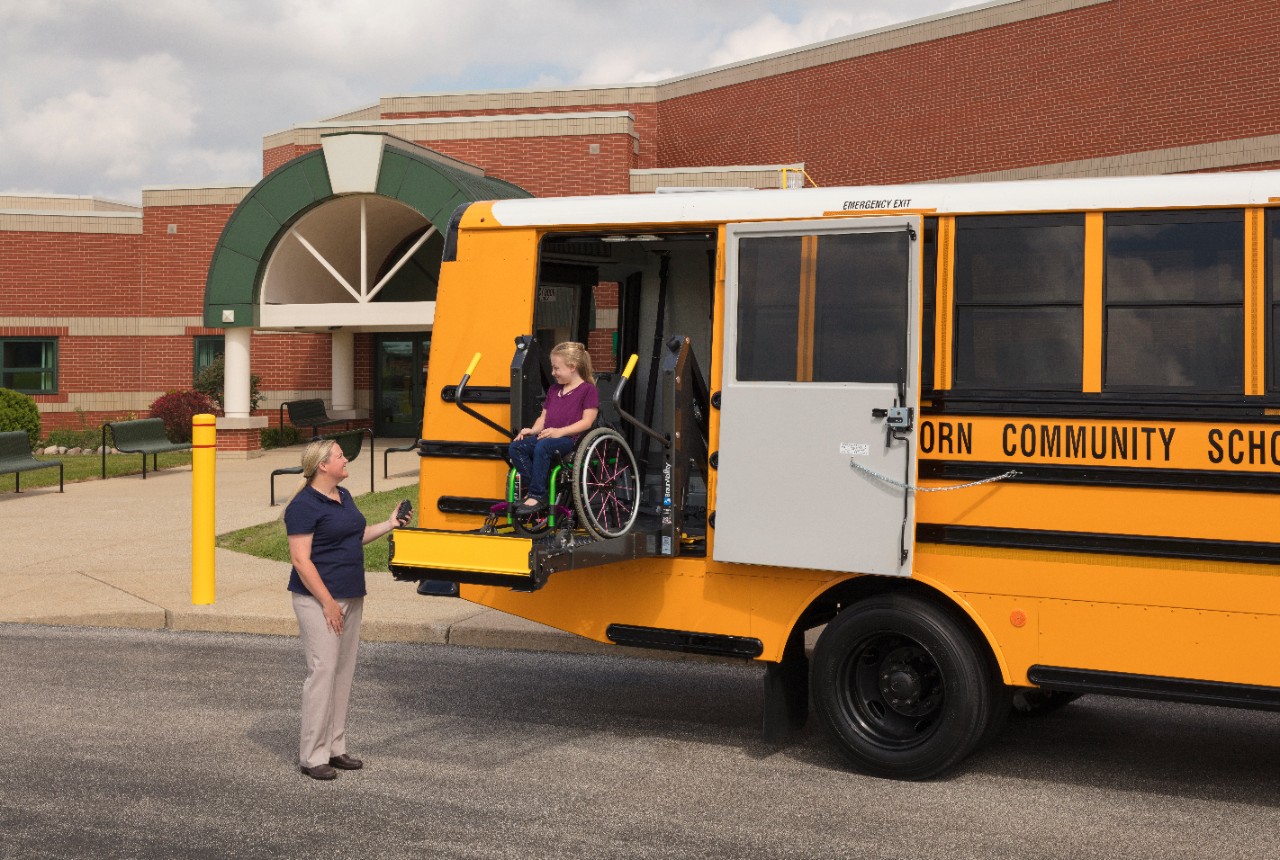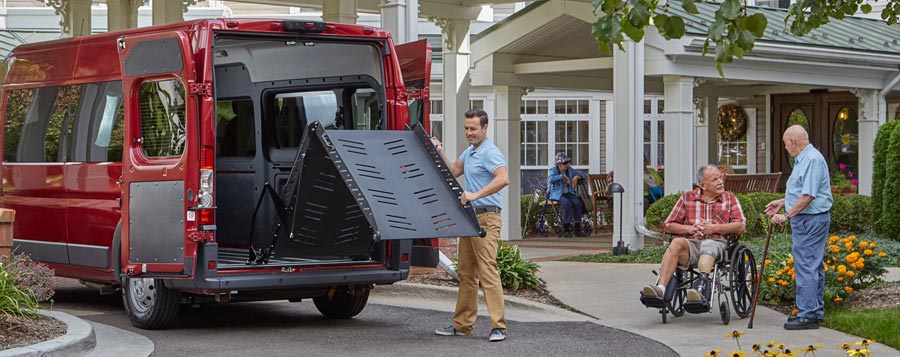Your Guide to School Bus Wheelchair Lift Safety

School Bus Wheelchair Lift Safety: Everything You Need to Know
Traveling on a school bus is the main form of transportation for many students across the United States, but for children with disabilities, it is often the only method of transportation that will accomodate their needs. A little over 13% of students have some form of disability, and around 300,000 students who travel on school buses are in wheelchairs.
There are a number of rules pertaining to school buses as part of ADA rules. Safe school bus wheelchair lift operation is one of the most important parts of the law.
Here are simple guidelines for operating wheelchair lifts.
ADA Rules Regarding School Buses
The Americans with Disabilities Act (ADA) is a civil rights law that prohibits discrimination of people with disabilities. Some rules pertain to discrimination in the workplace. Others have more to do with access to public places, government offices and transportation services.
ADA Titles II and III established guidelines for access to transportation services, including school buses. There are additional rules as part of the Individuals with Disabilities Education Act (IDEA). These laws require public schools to accommodate children with disabilities.
By law, school buses must be outfitted with wheelchair lifts and have designated seats or areas in which to secure students while in transit.
Who Is Responsible for Students?
It’s important to know who is responsible for students throughout the transportation process. A parent or caregiver must ensure that the student is at the bus stop on time. They must also stay to supervise and assist while their child is being loaded onto the bus.
Drivers have the most responsibility, as they must load students at the bus stop in the morning, unload them at school, and then repeat the process in the afternoon. Some school districts have designated monitors or school bus attendants who are responsible for loading and unloading students in wheelchairs.
Teachers also play a role in ensuring the safe transportation of students. The teacher should always accompany students to the bus loading area and wait with them until they are safely on the bus.
Securing the Load Area
Safely loading students onto a school bus begins even before the wheelchair lift is engaged. Here are four tips to remember:
- Park the bus where there is a level loading area.
- Be sure to avoid curbs or other obstacles.
- Set the parking brake on the bus.
- Secure the lift door.
Once you have secured the lift door, it’s time to start the process of transferring the student from the ground onto the bus.
Safe School Bus Wheelchair Lift Loading
The first critical area involves loading students in wheelchairs onto the bus. Here are eight key school bus wheelchair lift safety tips:
- Ensure the wheelchair is facing away from the school bus.
- Ensure the wheelchair brakes are securely locked.
- Ensure the roll stops are in the “up” position. On the lift? If barriers are not up, they are interlocked and the lift will not move regardless.
- Lower the platform using the hand-held controls.
- Ensure the platform is flat against the ground, including both vertical arms, before attempting to load the student onto the lift.
- Unfold the outboard roll stop with the hand-held control "down" button.
- Secure the wheelchair seat belt around the student (if applicable).
- Back the wheelchair onto the lift platform. (NOTE: Again, students should be facing away from the bus.)
There are a few extra safety tips for motorized wheelchairs:
- Never allow the student to “drive” the wheelchair onto the lift.
- Disengage the motor.
- Manually push the wheelchair onto the lift.
- Ensure the brakes are locked.
Note: You may have to turn off the power on motorized wheelchairs.
Tips for Loading Students Onto the Bus
Once the wheelchair is secured on the lift, it’s time to raise the student onto the bus. If possible, have the student hold onto the handrails. Students should always keep their arms and legs in the lift and clear of moving parts.
Now, it’s time to operate the lift. Be sure to stand next to the platform at the front corner. Always keep one hand on the wheelchair to ensure it doesn’t move or begin to roll. You should be able to operate the controls with the other hand.
Once the platform reaches the floor level of the bus, put the controls down. Release the wheelchair brakes and push it off the lift. Be sure to return and secure the lift in its “travel” position so it’s out of the way.
Securing the Student On the Bus
Next, you need to ensure that students are secured for the ride to school. Buses should be outfitted with a seven-point system. Four points are devoted to securing the wheelchair itself. The other three are meant to secure the student.
Some students can be transferred from the wheelchair to a regular forward-facing seat. If they remain in the wheelchair, there are regulations for ensuring the students are secure.
- Wheelchairs should face forward.
- Use lap and shoulder restraints as they are designed to protect students in the event of an accident.
- Use the official securement system provided by the school district (do not rig your own system).
- Use only the manufacturer’s tie-down system.
- Wheelchairs should never be placed near an emergency exit door.
- Follow the manufacturer’s guidelines for using the restraints.
- Use the anchors on the floor to ensure the wheelchair is centered.
- The rear seat belt should be secured at a 45-degree angle from the floor.
- Set wheelchair brakes on both sides.
- If the wheelchair is motorized, turn off the power.
- Attach wheelchair straps at four points, starting with the two straps along the wall, followed by the two along the aisle.
- Never attach straps to the wheels or anything that could detach from the wheelchair.
- Straps should attach directly from the floor to the wheelchair and should never criss-cross or twist.
- Attach the three-point lap and shoulder belt.
Use this handy wheelchair safety checklist to ensure you have secured the student properly.
Follow These Guidelines to Ensure Student Safety
It is your duty as a driver to protect the students you transport to-and-from school each day. These tips and guidelines for school bus wheelchair lift operation will ensure a student wheelchair user's safety at every point during transportation.
BraunAbility offers quality ADA-compliant commercial wheelchair lifts, wheelchair vans, and ramps for entities that provide transportation services. These transportation solutions can be applied to transit buses, school buses, taxis, rideshare services, and paratransit vans.
Contact us or search for a commercial dealer near you.



